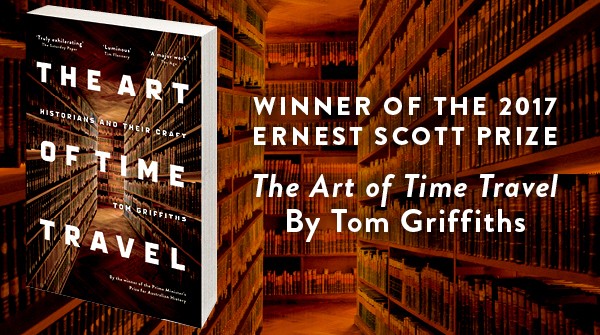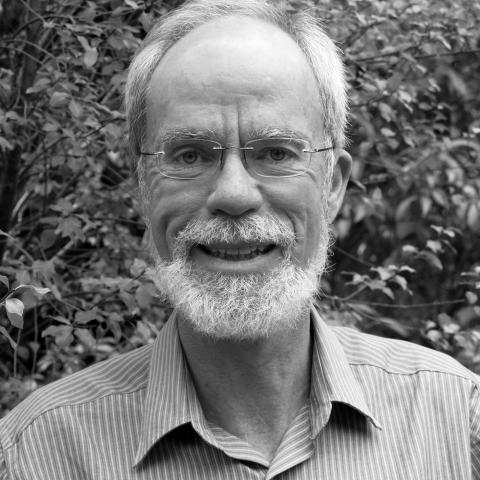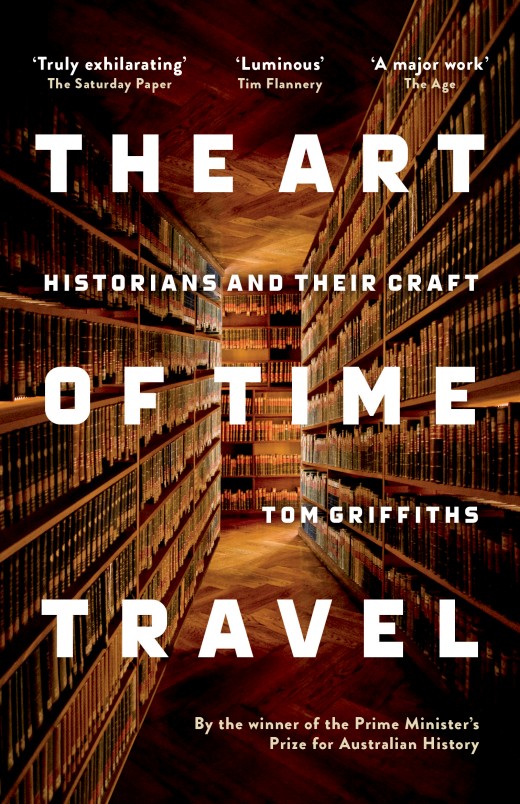News

News > Extract
The Art of Time Travel
Tom Griffiths has been awarded the Ernest Scott Prize for his book, The Art of Time Travel. Here is a feature excerpt from the book on Henry Reynolds, also an Ernest Scott Prize Winner. On Tuesday, 5 September Tom Griffiths will give the 2017 Ernest Scott/Annual History Council of Victoria Lecture. This is a free event hosted by the School of Historical and Philosophical Studies at the University of Melbourne in partnership with the History Council of Victoria. Book here.
The Frontier Fallen: Henry Reynolds
Henry Reynolds began his path-breaking book The Other Side of the Frontier (1981) by recalling a conversation with an old Torres Strait Islander man who recounted how his forebears had scrutinised a sailing ship lying offshore and had seen the Europeans on deck looking back at them using their telescopes, or ‘white men’s eyes’. At that moment, Reynolds reflected, ‘the idea of seeing Australian history from the other side of the frontier sprang into life.’ Reynolds’ historical consciousness was disturbed by his move in his late twenties from Tasmania (via two years in Europe and Britain) to North Queensland, where he felt that the frontier past ‘was still alive’.
He encountered the ‘fraught context’ of Townsville society, a place where to ‘talk openly about Aboriginal history was, in itself, a political act’. He experienced his move north from Tasmania to Townsville as a physical shock; he observed everyday racism and felt implicated. It was as if he had arrived in another country – or, as historian Alan Atkinson put it, ‘he sounds like a timetraveller visiting another generation.’
Reynolds faced a familiar historiographical dilemma: the creative tension between politics and history, passion and objectivity. On issues of race in northern Queensland, he found there was little light to be glimpsed between the two positions, between the history and the politics.
His history, he declared, was ‘inescapably political’ because it dealt with issues that continue to arouse ‘deep passions’. Reynolds and his fellow Queensland historians felt a ‘sense of urgency’: ‘We were self appointed missionaries who were required to enlighten the public. If we raised our voices we felt that was necessary to shatter once and for all the great Australian silence.’ Raising one’s voice – challenging the even
tone of scholarly neutrality with missionary zeal – was necessary to bring about change, and especially so if that ‘neutrality’ was revealed to have been unwittingly partisan. The sources of his scholarly awakening were the ‘ancestral’ gestures of the street and the looks in people’s eyes. This was the sense in which Reynolds’ work was inescapably political: he observed a history at work ‘which pressed heavily on the present’. ‘I could never completely separate in my mind past and present,’ he has reflected.
Such seamlessness is the realm of myth, where the past and present are bonded. Reynolds was dealing in myth as much as history, and in order to overturn it he had to raise his voice, be a missionary, offer something mythic in its place. As the historian Paul A Cohen has put it, historians ‘in the process of challenging one mythologised past, inevitably fashion others’. Reynolds’ memoir, Why Weren’t We Told? (1999), with its driving moral question, was shaped by the author’s strengthening need to bring ‘my professional life into line with my political life’.
When considering how to find a path between the ‘two positions’ – history as an instrument of reform and history as a process of understanding – Reynolds concluded that ‘Those lacking the anchor of complete moral certainty will find themselves uneasily adrift between the two.’ Complete moral certainty, then, offered itself as an anchorage in a stormy sea.
As he pursued his long-term inquiry into the history of race relations, Reynolds increasingly favoured the moral and the political over the academic, and so it could be said that his work became more utilitarian over the years – and perhaps more mythic’. Noel Pearson, who admires Reynolds’ work and shares his human rights perspective, nevertheless feels that ‘more dispassion and less politics’ might have enabled his history to be more unifying.
It was this struggle between ‘professional standards’ and ‘political ends’ that shaped the kind of historian Reynolds is: empiricist, rational, highly structured, heavily evidenced, reinforcing and repetitive, professionally conservative, accessible to the courts. Reynolds takes every opportunity to assert the empirical ballast of his arguments, and his early prose, especially, was freighted with corroborative evidence. The more radical his ‘political ends’ became, the more traditional his ‘professional standards’ needed to be. This was a conscious balancing act.
Share this post
About the author
Tom Griffiths is the W K Hancock Professor of History at the Australian National University and the author of Slicing the Silence: Voyaging to Antarctica (2007), Forests of Ash: An Environmental History (2001) and Hunters and Collectors: The Antiquarian Imagination in Australia (1996). His books and essays have won prizes in literature, history, science, politics and journalism, including the Prime Minister’s Prize for Australian History, the Alfred Deakin Prize for …
More about Tom Griffiths




